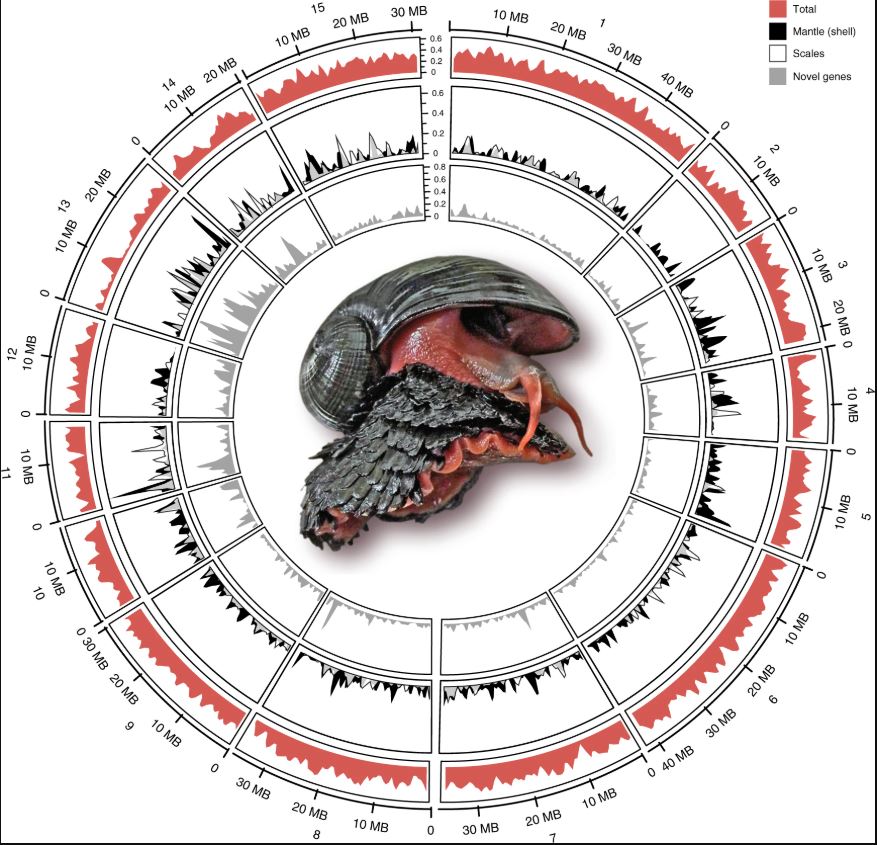Throughout the animal kingdom, evolution has devised myriad ways for organisms to protect themselves from predators, competitors, and their environment. The advent of hard, biomineralized shells — shells formed from minerals extracted from the environment and reconstituted through biological — is a major development in the evolution of life on earth.
Most biomineralization comes in various flavors of calcium carbonate – the shells of mollusks, the hard parts of coral, the tests of diatoms and other zooplankton, even human bones. Soluble in seawater and relatively easy to mobilize in living organisms, calcium carbonate combines with living tissues to form strong, hard-wearing, ever growing structures. But there is one organism that has decided calcium carbonate is not enough and has instead forged their shells from a much tougher material – Chrysomallon squamiferum, the scaly-footed snail with a shell made of iron.
A new study from researchers in China, Japan, Ireland, Germany, and Mauritius, unveils the genome of the scaly-footed snail, with an emphasis on genes that regulate biomineralization. Though the process of forming a shell from iron is, as far as we know, unique among shell-building animals, the genes that control that process are ancient. Rather than new genes evolving to control the precipitation and biomineralization of iron, the scaly-foot gastropod uses a toolkit available to many shell-forming species. It is the expression of existing, common biomineralization genes that give the iron snail it’s armor.
How that gene expression translates into iron-enriched plates is another mystery that was recently revealed. In another study published late last year by many of the same authors, the mechanism by which iron nanoparticles are incorporated into the scaly-footed snail’s scaly foot was further explored. Sulfur is transported through channels in the scale, where it reacts with iron-enriched seawater to form layers of iron sulphide. Curiously, these iron rich plates may have evolved to help mediate sulfur accumulation, rather than for protection.
Though the plume of a hydrothermal vent can be incredibly hot, the surrounding water is barely elevated above ambient water temperature. The process of accreting iron nanoparticles at low temperatures could provide substantial benefit to manufacturing in many industries.
While the scaly-footed snail has become an ambassador species for organizations working to protect the deep oceans from human impacts, it could just as easily serve as a mascot for the deep-sea mining industry as well. After all, Chrysomallon squamiferum has been extracting and refining heavy metals from seafloor massive sulphides for longer than we’ve known that hydrothermal vents existed.
Featured Image: Genome of the Scaly-foot Snail. Image from Sun et al. 2020.
